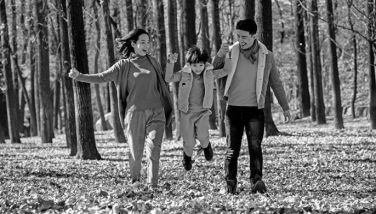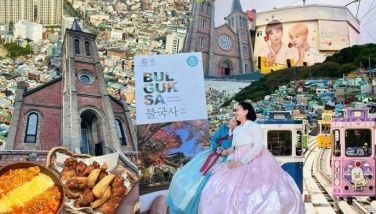A treasure trove of Filipiniana
MANILA, Philippines – It’s the 15th anniversary of the Philippine Opera Company (POC), headed by soprano Karla Gutierrez, and they’re bringing back not something artsy like La Boheme but the delightful Ang Bagong Harana: A mélange of Sylvia la Torre songs, tribal chants, traditional songs, dances and games; kundiman, old standards and contemporary OPM.
The performers are Karla herself, Cris Go, Lorraine Lisen, Melissa Camba, KL Dizon, Cristiani Rebada, Michael Odoemene, Noel Rayos, Lawrence Jatayna, Nazer Salcedo and the Ramon Obusan Folkloric Dance Group.
The show is directed by Floy Quintos, and will have a limited run at the Romulo Auditorium, RCBC Plaza, Makati City, today and on Oct. 24 (8 p.m.) and Oct. 18, 23 and 25 (3 p.m.). Call 0917-5272880.
Musical arrangements are by composers Von de Guzman, Jessie Lasaten, Jesse Lucas and Paulo Zarate.
What made the show a success?
“I guess the Filipino is looking for something that will bring back yung mga songs na naririnig nila when they were kids,” says Karla. “At first, we really had a hard time promoting the show. It was a matter of ‘dragging’ the audience to the theater. And once they saw the show, they would always come back, bringing their children and grandchildren.”
The first suite of the show is dedicated to the children who, as the POC artistic director notes, “today only play iPod. They don’t play patintero, taguan anymore. Tapos they don’t know anymore Si Filemon, Pamulinawen, so pinakita naming ang mga larong pambata.”
The second suite showcases the Cordillera region in the north, with the lumads like the Kankana-ays (Igorots) as well as the Muslims in the south. There are chants, dances and colorful costumes. “It shows that no matter what our region or religion is, we are Filipinos,” says Karla. In the next suite, the scene shifts to an Amorsolo-like setting, with singing and dancing in the fieds, the Dalagang Bukid era, with a bahay kubo and songs like Magtanim ay Di Biro.
“The fourth suite is very dramatic,” declares the soprano. “It was very ingenious of direk Floy to make a short story, an evolution of the Filipino flag, from a kundiman song. It’s the end of Act I but it’s so dramatic. It’s like the end of the show pero hindi pa. Act I lang yan.”
Act II opens with a bodabil, a tribute to the iconic Sylvia La Torre, comedienne par excellence and classically-trained soprano. Her songs are arranged in a modern way, so as to attract the attention of the younger generation. “It’s really a merge of the modern with the live instruments of the Ramon Obusan Folkloric Group, like the rondalla,” says Karla.
There is another suite which also goes back to the past, with the dances of yesteryear, complemented by the durable songs of the Three Cs, as POC refers to them: (Ryan) Cayabyab, (George) Canseco and (Willie) Cruz. “It’s show-stopping,” raves Karla. “All the songs na ginagamit sa teleserye.”
The segment ends with a haunting rendition of Freddie Aguilar’s Anak, which lost out to Cayabyab’s catchy Kay Ganda ng Ating Musika in the first MetroPop during the mid-’70s but became internationally popular.
A kalikasan medley follows, a wakeup call to take care of Mother Nature and to beware of corrupt politicians. There are scenes of Supertyphoon Yolanda, and fighting in Mindanao. Sino ang dakila? Sino ang tunay na baliw, as the song goes. “It’s really very political, very relevant,” asserts the POC head.” It’s what is happening in the Philippines now. Kasi we are so focused here in Manila.”
The pageant begins and ends with the children, that is, with a child reciting the Panatang Makabayan. “It’s so powerful,” says Karla. “Dito tinatamaan ang audience. Iiyak na ang mga tao.” So if you want to be entertained, feel proud again to be Filipino and end up with a good cry, see Ang Bagong Harana. Or view it again.
- Latest
- Trending
































